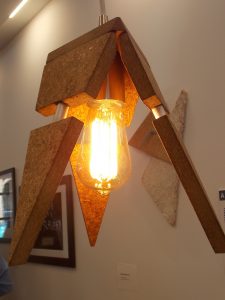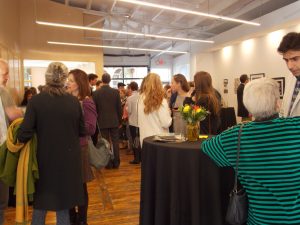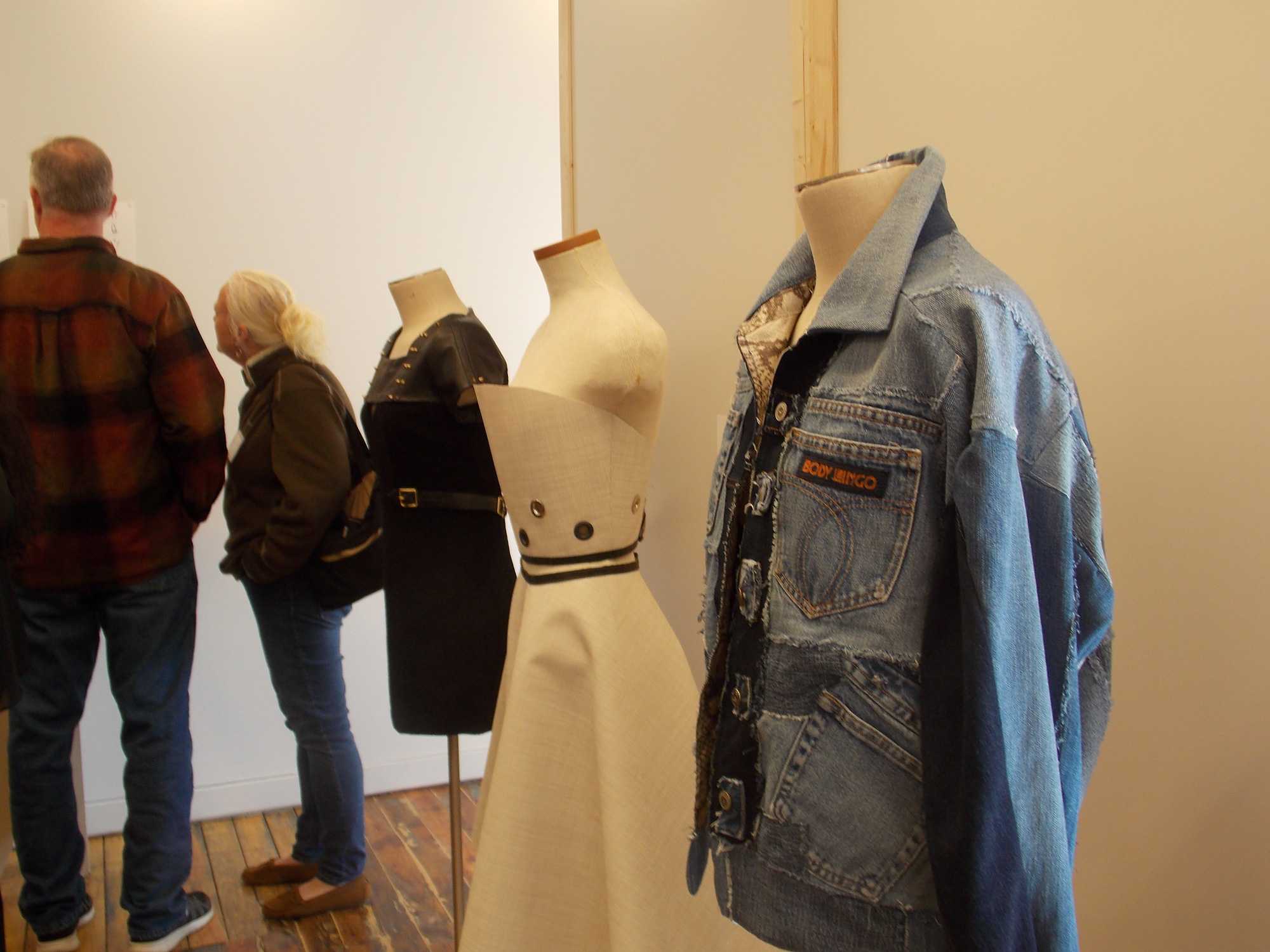On April 7, faculty and students of the IDEXlab joined student artists and the public to celebrate the unveiling of the HOW Space, a multipurpose collaboration space on Howard Street.
The IDEXlab, or the Integral Design Experience Laboratory, is an Appalachian State University program designed to provide students with hands-on experience in the real world. The laboratory “intends to redefine traditional pedagogical approaches to the study of the built environment in higher education,” the program’s website says.
The lab allows students to commission, design and build actual products with real clients, with educators serving as facilitators. This year, the cohort consists of 16 students: eight architectural technology and design students, four construction management students, three sustainable building technology students and one interior design student.
Technology graduate student Leah Simmerman served as a graduate assistant and advisor for the project. Simmerman said that she felt this experience was so innovative because its lessons were so much different from those in the classroom.
“It really prepares you for the job market in a way that no other program does,” Simmerman said. “You learn some of those soft skills that you don’t really learn in a classroom, like how to work through problems, how to adjust measurements while still fitting the constraints of a project and working with and talking to other people.”
Simmerman felt that not only were the lessons different, but the weight of what the students were learning and doing was impactful as well.
“The difference between a B- and a B+ is very different from creating something like this, because here, it’s either done or it’s not,” Simmerman said.
The tangible reality of a project like this, as well as the strictness of a deadline, provides an experience that Simmerman said students rarely get.
The gravity of these deadlines, Simmerman said, had a lot of weight on the students. Many of them were still working at 3 a.m. two nights before the grand opening doing finishing touches, knowing that two nights later more than 200 people would pile into the space to celebrate the HOW Space’s grand opening.

Senior construction sciences major Alex Mott, who served as the lead estimator in the construction of the HOW Space, said that the hands-on experience gave him much to learn.
“Construction is all about learning through your mistakes,” Mott said. “I’ve learned a lot more through my mistakes than I have sitting in class.”
Mott and the rest of his team began designing the space about three weeks into last semester, began demolition in December 2016 and finished the space four days before its grand opening.
Finishing the hefty remodel in such a short time involved hard work.
“We’ve been putting 20 to 30 hours into this space alone, on top of schoolwork and everything else,” Mott said. “It’s a huge weight off our shoulders and we’re really proud of it.”
The experience, however, has been beneficial in more ways than one. Mott said that the project encouraged better communication skills between the groups, hands-on learning about how design and construction come together and most importantly, room for trial and error. The students have been able to make and fix their own mistakes and test new ideas in the real world.
Mott was just as excited about the purposes the new HOW Space will serve, describing the space as “a window for the community to see what students are doing.”
The space, commissioned by the College of Fine and Applied Arts, is intended to be function as a studio, gallery, meeting space and whatever else the community of Boone and App State wishes to use it as.
Over the last two years, the college has rented out the space for events such as the First Friday art crawls, but the CFAA has decided to formally lease it to make the efforts and ideas of the university more visible to the surrounding community.
Associate dean of the CFAA, IlaSahai Prouty, said the creators of HOW Space want to “have it be a place where different populations of people can intersect and do collaborative and interdisciplinary work.”
The name combines not only Howard Street, the street on which the studio resides, but also the question, “How?”
“We were thinking about the fact that this is a place where we would do things and ask questions,” Prouty said. “The questions were who, what, when, where, why and how, as in HOW Space.”
Though the building will showcase student and faculty projects, it will also be open for public use. Members of the community can rent out the space for any number of days to use for anything from a potluck dinner to a class project, but the inventors of the HOW Space have some ideas about what purposes the space should serve.
For starters, Prouty said, the event should be interdisciplinary in some way. It should have the ability to involve the community or multiple communities. Finally, she said, the event should enrich the community in which we live.
As the HOW Space comes into being in the Boone community, the committee behind the project hopes to create a sort of operating manual to supplement the space with. It will contain the obvious details, such as where to find fire extinguishers and how to change out panels, but it will also include sections about the building’s purpose and the creators’ vision.

Little niceties, like cleaning up after yourself and welcoming others into the space seem like common sense, but Prouty and her colleagues said they hope that setting intentions about how to work and interact with one another will “help to express the spirit with which to operate in the space.”
The HOW Space’s grand opening was also an unveiling for App State art exhibit “Activision.” The exhibition, Prouty said, was a call to students of the College of Fine and Applied Arts for works relating to sustainability and social justice.
Works broached topics of feminism, domestic violence, slavery, voting rights and other relevant social issues through photography, quilting and sculpture, among other mediums.
“It’s a wide-ranging show because there are a lot of different ways in which social justice can be interpreted,” Prouty said. “The work comes from a lot of different places.”
Story by: Ashley Goodman, A&E Reporter
Photos by: Ashley Goodman, A&E Reporter

